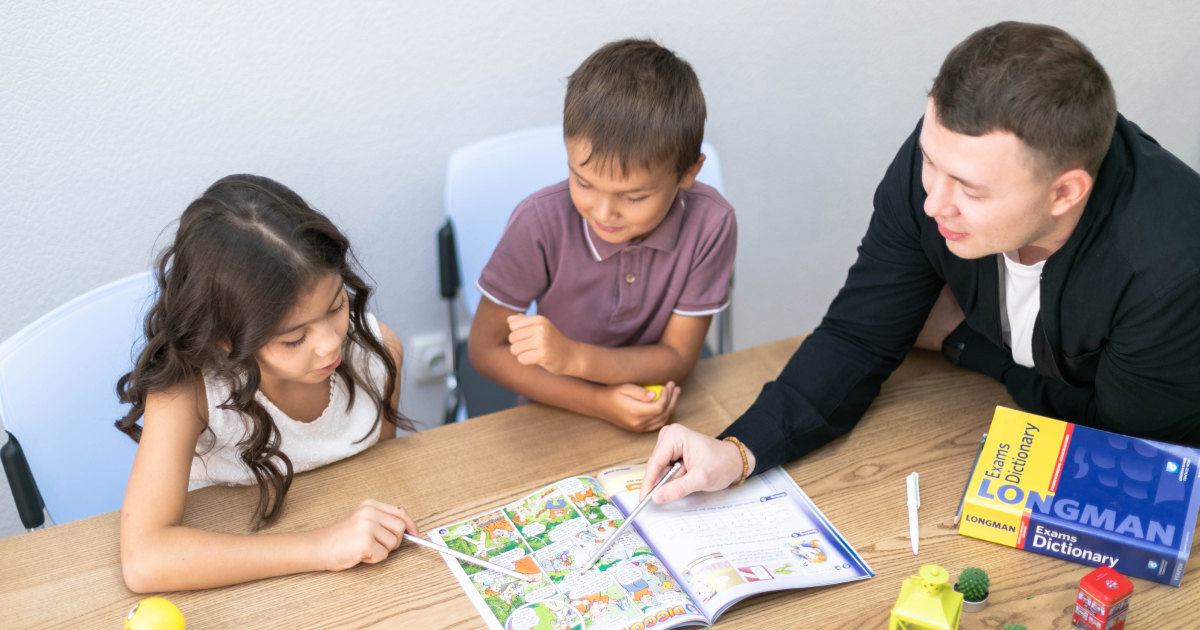Balancing work and CELTA: tips for busy professionals
- Teaching qualifications
- Tips & Strategies

06.02.2025
The first lesson is always crucial, regardless of the students' age.
However, it is especially significant when teaching teenagers, as engaging their interests and earning their trust can be quite challenging.
What strategies can help create a comfortable environment and motivate them to learn? Let's explore.
A comfortable and trustworthy atmosphere is essential for the first lesson. It helps students decide whether the lesson environment suits them.
By greeting them with a smile, respecting their boundaries, and showing genuine enthusiasm to see them, you take the first step towards a successful introduction.
Let’s look closely at what to do and what to avoid when creating this atmosphere.
| Dos | Don'ts |
| Demonstrate sincere interest in every student. | Don't over-control your students, don't put strict rules during the first lesson (strictness can be repulsive). |
| Use icebreakers to help students get to know each other. Explore our blog for suitable ESL icebreaker ideas. | Don’t pressure students to share personal information if they feel shy or uncomfortable.
|
| Foster a dialogue based on mutual respect and equality. | Don’t position yourself as superior or overly authoritative. |

Teach teenagers with confidence
Join our courseThink back to your school days. You probably remember there were always some students who didn’t actively participate in lessons, often becoming distracted and eventually losing interest.
It seemed that only those whose parents constantly emphasised the importance of education, or even scolded them for poor grades, actually made an effort to study.
But why did this happen? The primary reason was that, in those days, teachers didn’t prioritise making lessons engaging or interactive.
Their main goal was to deliver the material, and it was left up to the students to make sense of it on their own. In contrast, modern teachers now use a variety of strategies to motivate students and actively engage them in lessons.
Let’s take a closer look at some of these approaches in the table below.
| Dos | Don'ts |
Integrate gamification into lessons through online games or classroom activities. Introduce grammar and vocabulary in a fun and memorable way.
| Don't make lessons dull or monotonous. It is also important to avoid creating situations designed to be overly competitive. For instance, dividing the class into groups and awarding points to each might alienate or upset some students. A better approach would be to postpone such activities and incorporate this type of group competition into future lessons as part of a game. |
| Use authentic materials such as YouTube videos on engaging topics, articles, or excerpts from captivating fiction books. Alternatively, select the most interesting assignments from a variety of textbooks. | Don't rely on the one-size-fits-all exercises from a single textbook, as this may lead students to frequently glance at the clock, eagerly waiting for the lesson to end.
|
| Show the benefits of learning English, how it can be related to their real life, and give suitable tasks. | Don't choose too difficult tasks for pair or group work. The first lesson is not a test or independent work. |
How to start with CLIL?
Working with teenagers is always about balancing friendliness and the ability to set boundaries.
If discipline isn’t established from the outset, managing the group effectively will be far more difficult later on.
While it’s unnecessary to enforce strict rules during the very first lesson, as this could create an overly tense atmosphere, allowing the session to spiral into chaos is equally unhelpful.
Show your friendliness, but at the same time make it clear, for instance, that everyone has the right to speak, but they need to do so in turn.
| Dos | Don'ts |
| If a rule has been established, it must be followed during the lesson. | Don’t ignore violations, even if they seem minor (but avoid being overly strict). |
| If there are conflicts in the classroom, resolve them calmly and privately. | Do not address issues with students in front of the entire group. |
| Praise good behaviour. | Do not focus solely on infractions; instead, create a positive atmosphere around you. |

In the first lesson, it’s important to discover your students’ hobbies.
Many teens are likely to share similar interests, which means you can later personalise your lessons and select materials that truly resonate with them. For example, if most of the group enjoy watching Squid Game, you can easily find resources or create activities inspired by the series.
Tools like Twee or Learnt.ai are great for developing materials on specific topics from scratch.
| Dos | Don'ts |
| Ask questions about what students like and dislike about their learning experience to make timely adjustments. | Don't ignore feedback. |
| Strive to stay updated on new trends and refresh lesson content regularly. | Don't use outdated materials. |
| Adapt teaching materials to align with popular trends or topics that students are discussing. | Don't forget about balance — despite the interests of the group, make sure the lessons are in line with the educational objectives and plan. |

Top questions to identify great English teachers
To the listICQs (Instruction Checking Questions) and CCQs (Concept Checking Questions) are techniques used to enhance understanding during lessons.
ICQs are questions designed to ensure that students have understood the instructions correctly.
Instead of asking, “Do you understand?” (to which everyone typically nods, even if they haven't understood) it’s more effective to use straightforward questions, such as: “Will you be working in pairs or individually?”, “How many sentences do you need to write?"
CCQs, on the other hand, are questions that check understanding of a concept, rule, or vocabulary.
For example, if you’re explaining the grammar (Past Simple), you can ask: “Are we talking about the past or now?”, “Did this action happen yesterday or every day?”
| Dos | Don'ts |
| Formulate questions as concisely and clearly as possible. | Avoid asking questions that are too challenging for your students, and don't ask too many questions. |
| Plan your ICQs and CCQs in advance to ensure they align with the task. | Don't improvise questions on the spot if they might confuse the students.
|
| Pay attention to students' reactions to ensure they have understood everything. | Don’t move on if students are unclear about what to do; it is better to explain again. |
The first lesson with teenagers lays the groundwork for effective interaction over the course.
This is the moment to establish the tone of your classes, set clear expectations, and create a supportive environment where students feel at ease to learn.
By addressing their motivation, articulating your expectations clearly, and fostering a sense of discipline, your lessons can become both productive and enjoyable for everyone involved.
Kateryna Kuchynska
Author
Content Manager | Teacher of General English
Comments
Leave your comment